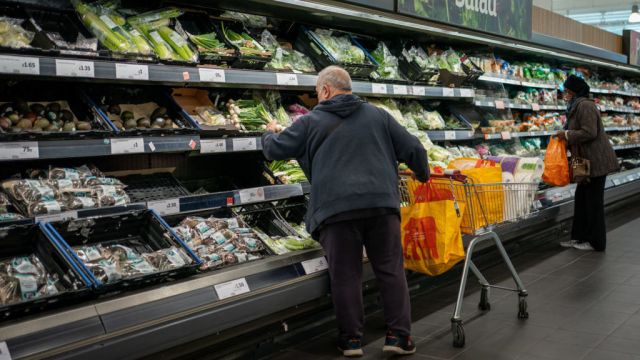UK inflation remained at 6.7 per cent last month as easing food and drink price rises were offset by higher petrol and diesel prices for motorists, according to official figures.
It halts three consecutive months of waning pressure on household budgets.
The UK's Office for National Statistics (ONS) said Consumer Prices Index (CPI) inflation stayed at the same rate as seen in August, despite expectations that inflation would fall again.
Analysts had predicted inflation would dip to 6.6 per cent for the month.
Annual inflation was unchanged in September 2023:
▪️ Consumer Prices Index including owner occupiers’ housing costs rose by 6.3% in the 12 months to September, unchanged from August
▪️ Consumer Prices Index (CPI) rose by 6.7%, unchanged from August.
➡️ https://t.co/0N7k3O1qRN pic.twitter.com/2AciOLbg8dAdvertisement— Office for National Statistics (ONS) (@ONS) October 18, 2023
The reading is set to be used to calculate the increase in benefits payments next year, as well as outlining rises in some taxes, such as business rates.
It also comes after separate figures from the ONS on Tuesday showed that wages outpaced inflation for the first time in nearly two years.
ONS chief economist Grant Fitzner said: “After last month’s fall, annual inflation was unchanged in September.
“Food and non-alcoholic drinks prices eased again across a range of items, with the cost of household appliances and air fares also falling this month.
“These were offset by rising prices for motor fuels and the cost of hotel stays.”
The costs of food and non-alcoholic drinks are still significantly higher than a year ago but are now falling month on month, statisticians at the ONS said.
The price of supermarket staples in September was still 12.1 per cent higher than the same month a year ago. However, the inflation rate declined compared with the 13.6 per cent figure recorded in August.
The ONS said the products which saw inflationary pressure ease back most included milk, cheese and eggs.
Furniture and household goods also had a downward effect on the inflation rate after price rises eased, particularly for larger household appliances.
Elsewhere, these reductions were offset by motor fuel costs.
The ONS said prices were still almost 10 per cent lower than this time last year, but jumped 3.6 per cent against levels from August, as supply restrictions in the Middle East caused oil prices to increase.
Commenting on today’s inflation figures for August, ONS Chief Economist Grant Fitzner said: (1/3)
⬇️ pic.twitter.com/PLi6vkCg2Y— Office for National Statistics (ONS) (@ONS) October 18, 2023
Inflation remains significantly above the Bank of England’s 2 per cent target rate, while there is also still pressure on the UK government to meet its pledge of halving inflation in 2023. It will need the rate to fall to below 5.4 per cent by the end of the year.
However, shortly after the inflation figures were published, the UK's Treasury minister Andrew Griffith insisted the government is “on track” to meet this commitment.
British chancellor Jeremy Hunt said: “As we have seen across other G7 countries, inflation rarely falls in a straight line, but if we stick to our plan then we still expect it to keep falling this year.
“Today’s news just shows this is even more important so we can ease the pressure on families and businesses.”
The latest figures also showed the CPI measure of inflation including housing costs (CPIH) was 6.3 per cent last month, remaining at the same rate as seen in August.
The Retail Prices Index meanwhile slowed to 8.9 per cent from 9.1 per cent in the previous month.







